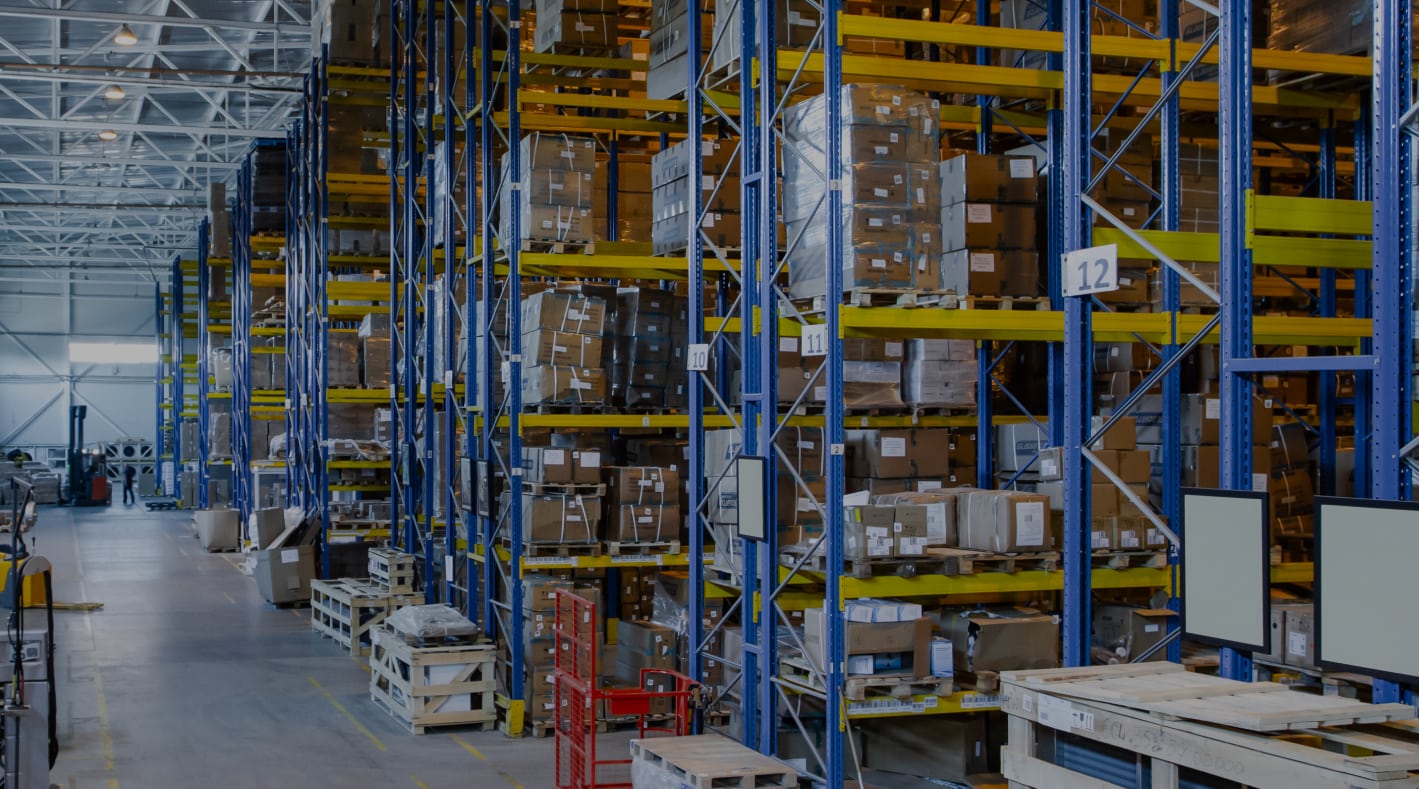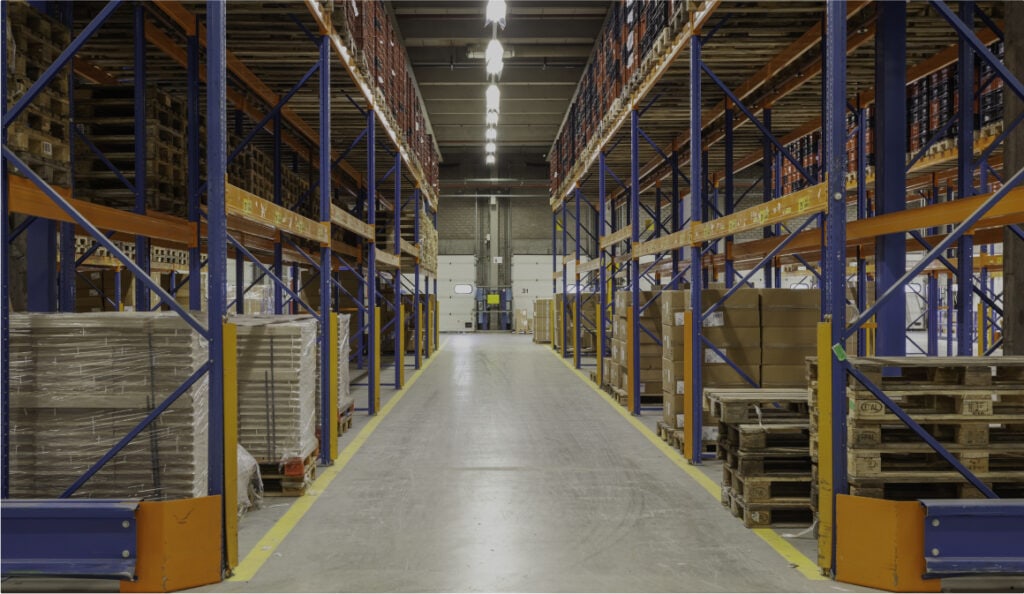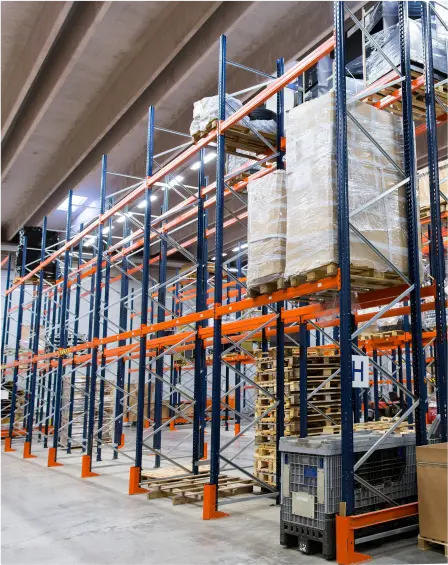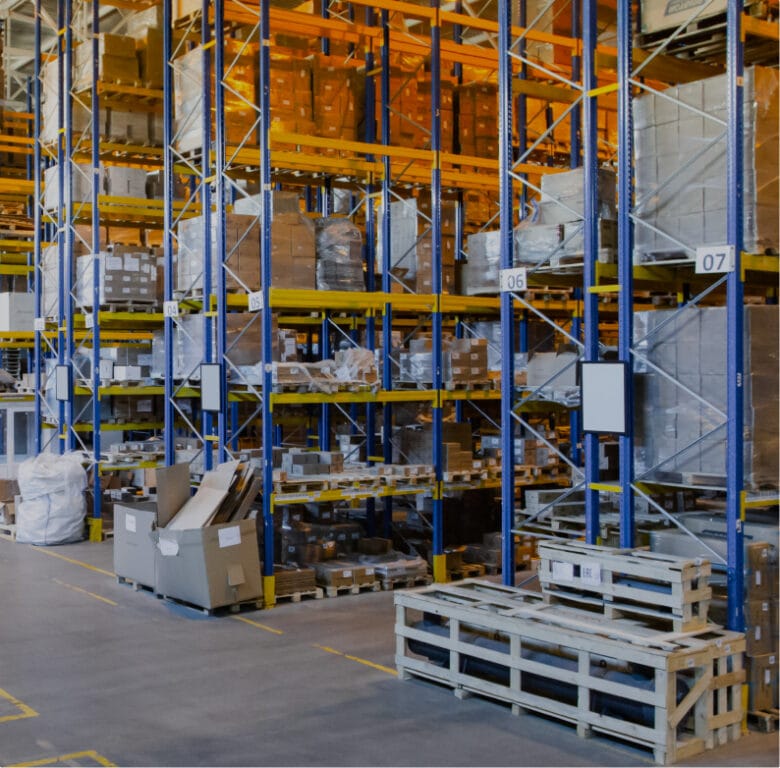- Home
- Solutions
- Rack Systems
- Selective Pallet Rack
Selective Pallet Rack

Walk into any modern warehouse and you will likely see selective pallet racking systems in use.
It’s the most popular type of pallet racking on the market today — and for a good reason. Selective pallet rack offers several different variations, including single or double-deep and material choices like roll-formed and structural steel to tackle many different common warehouse storage needs.

TABLE OF CONTENTS
Roll-Formed Racks
When it comes to selective pallet racking types, one of the significant differentiators is material. In most cases, you’ll need to choose between roll-formed and structural steel racking systems.


Manufacturers construct these storage systems using heavy-duty sheet metal. The most common pallet racking system that uses roll-formed steel is teardrop-style selective pallet racking. This highly versatile style of pallet racking is quick to assemble, and sourcing additional components and parts is fairly painless.
Of course, teardrop is just one style available on the market. You’ll often find other manufacturers producing different styles like Interlake New Style or Keystone pallet racking — each with different advantages and availability.
A roll-formed pallet racking system uses a unique key and plug system of assembly. While no bolts are required for assembly, most roll-formed styles will utilize beam clips for extra safety. Regardless of assembly methods, roll-formed selective pallet racks have a reputation for easy assembly.
Even so, if you’re interested in installing a racking storage system in your warehouse, consider working with a team of professionals to handle equipment installation.

Advantages and Drawbacks of Selective Roll-Formed Pallet Racking
A potential drawback of roll-formed racks is their construction.
While these racking systems do use heavy-duty sheet metal for construction, it’s no match for pallet trucks or forklifts over the long run. Roll-formed racks can sustain more damage than other types of racks — particularly structural steel racks.
On the other hand, roll-formed racking is perfect for light to middle-weight products.
It works best in warehouse environments with many product SKUs, particularly if there are multiple sizes. If you carry many seasonal products and require multiple uses for that space, roll-formed racking may be the right option if you’re interested in improving warehouse efficiency and operations.
Structural Steel Pallet Racking
Structural pallet racking gets its name from the material used in construction: C-channel steel.
Compared to sheet metal used in roll-formed racks, this material is much more durable and impact-resistant. Additionally, instead of a boltless locking design, each upright and crossbeam bolts together. This provides increased strength.
The steel used in structural racking is thicker. As a result, it’s more resistant to impact/damage from forklifts and other warehouse equipment.
Advantags and Drawbacks of Structural Steel Pallet Racking
Durable is the word often associated with structural racking.
You will find structural rack systems in use in many traditional warehouse environments. But its durability means it’s a good choice for extreme climates such as freezers, too — making it an excellent choice for cold storage environments.
Thanks to its C-channel construction, you’ll find virtually no hard-to-reach areas of structural racking systems. This makes this racking style the preferred choice for food manufacturing and storage.
Some downsides include cost and assembly method. Since manufacturers use strong and durable structural steel, this type of racking is often less cost-effective relative to roll-formed racking. Additionally, the bolt-in style of assembly means installation will be a more involved process.

Choosing the Right Size Racking System
There are several sizing factors to consider to get the right rack for your facility. First, you want to make sure the depth of the racks matches the depths of the intended pallet size with an additional 3 inches of overhang on each side. Some common depths include:
- 36”
- 42”
- 48”
Next, it’s time to size upright height. Here, you’ll need to consider various factors:
- Ceiling height
- Equipment reach
- Fire code regulations
Upright capacity is another element of choosing the right system. Here, gauge and size, along with beam spacing impact capacity. Consult manufacturer charts or contact the East Coast Storage Equipment team for more information.
When it comes to beam width, allow for at least 4 inches of clearance on each side of the pallet, along with an additional 4-6 inches of lift space above. For beam capacity, this will vary based on the beam’s width, height and intended load. If you have questions or are not sure about which size beams and uprights you need, we’re here to help. Give us a call at 888.294.4022.
Configuring Selective Racking Systems
When it comes to commercial storage racks, selective pallet racking is indeed a widely used style. But, when it comes to installation, configuration and assembly, what should you know?
Configuring your selective pallet racking system is almost as important as the style and material of the rack you choose. You’ll need to weigh several factors for improved warehouse efficiency:
- Intended Use
- Space constraints
- Inventory management process
- Labor needs
If you’re struggling to put all the pieces in place, consider getting help. Here at East Coast Storage Equipment, our team of equipment experts can help you make the most out of facility design and layout.
Another important safety factor you need to understand is proper pallet rack anchoring.
Anchoring your pallet racks is not only essential to maintaining a safe warehouse, but it’s also a requirement to meet specific industry standards. The Rack Manufacturers Insitute (RMI) has long been in charge of setting safety standards for industrial racking and material handling, and the American National Standards Institute (ANSI) has vetted and approved the standards RMI has set for anchoring pallet racks.

Outfit Your Facility with Quality Selective Pallet Racking
Get the pallet racking you need to maximize storage space and get a handle on your inventory. Browse East Coast Storage Equipment’s expansive racking inventory today.
Pallet Rack Installation: Why You Should Get Professional Help
Expert Preparation and Assessment
Professional installation services will come prepared with the right tools and safety gear to get the job done. They’ll properly stage components and assess the site for optimal setup, ensuring the ground is level, free from obstructions and ready for a smooth installation.
Precision in Building Bays
An expert equipment team will mark out layouts, analyze vertical space, secure uprights to industry standards and place beams with precision. Their professional approach is crucial in defining accurate layouts that make sure each component is aligned and secure correctly.
Guaranteed Structural Integrity
Achieving plumbness and levelness is vital for the stability of the racking structure. Professional installers will use their expertise and tooling to verify the necessary shimming adjustments for optimal structural integrity.
Compliance and Safety
By abiding by industry safety standards, storage equipment experts will ensure each connection is double-checked and that the entire system complies with rigorous safety standards. This makes for not only a safer warehouse but also a longer-lasting racking system.
Selective Pallet Racking: Putting It All Together
While selective pallet rack is a common choice for many storage environments, this rack system is not perfect for every setting.
Applications that require dense product storage are not well suited for this type of racking. Moreover, manufacturers don’t design selective racking for high-density vertical storage. Safety and expense are the main reasons most do not recommend selective racking systems higher than 40 feet.
The same is true for warehouses with small footprints. Selective rack requires quite a bit of space.
But, selective racking makes sense for many warehouse settings, including:
- General warehouse storage
- Industrial storage
- Retail storage
These racks offer easy accessibility and can be reconfigured easily. Additionally, selective rack typically provides a quick and economical installation experience.
Are you looking to add selective pallet racking to your warehouse floor?
Discover which selective rack option is best for your facility by talking with one of our equipment experts. Get in touch today!
Frequently Asked Questions
Lorem ipsum dolor sit amet consectetur?
Lorem ipsum dolor sit amet consectetur. Vel purus vivamus diam suscipit neque in. Pulvinar ante elementum ultrices venenatis in. Libero cras massa ac dolor facilisis sollicitudin viverra sollicitudin vel. Vitae suspendisse urna consectetur cum convallis tellus parturient. A libero at quam tincidunt posuere venenatis at at lectus. Sed morbi convallis aenean in.
Lorem ipsum dolor sit amet consectetur?
Lorem ipsum dolor sit amet consectetur. Vel purus vivamus diam suscipit neque in. Pulvinar ante elementum ultrices venenatis in. Libero cras massa ac dolor facilisis sollicitudin viverra sollicitudin vel. Vitae suspendisse urna consectetur cum convallis tellus parturient. A libero at quam tincidunt posuere venenatis at at lectus. Sed morbi convallis aenean in.
Lorem ipsum dolor sit amet consectetur?
Lorem ipsum dolor sit amet consectetur. Vel purus vivamus diam suscipit neque in. Pulvinar ante elementum ultrices venenatis in. Libero cras massa ac dolor facilisis sollicitudin viverra sollicitudin vel. Vitae suspendisse urna consectetur cum convallis tellus parturient. A libero at quam tincidunt posuere venenatis at at lectus. Sed morbi convallis aenean in.